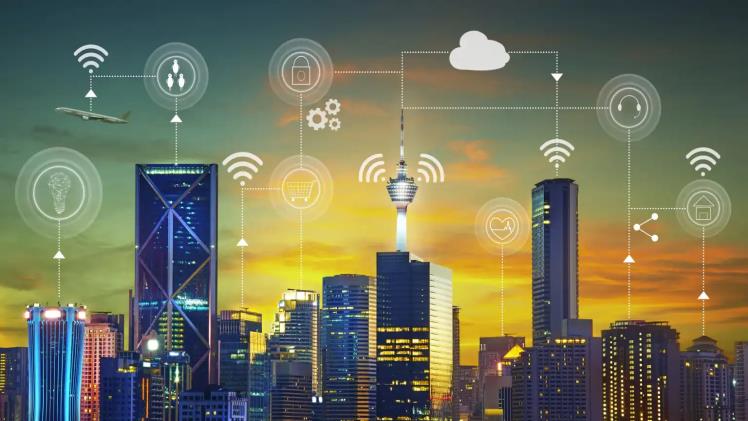In the digital era, smart cities are no longer a futuristic concept—they are rapidly becoming a global reality. As cities grow smarter with sensors, cameras, and connected devices embedded in their infrastructure, a massive amount of data is being generated every second. Managing and processing this data in real-time has become a challenge. This is where edge computing steps in, emerging as a transformative technology that enhances urban efficiency, responsiveness, and sustainability.
What Is Edge Computing?
Edge computing refers to the practice of processing data near the source of generation—at the “edge” of the network, rather than relying on centralized cloud data centers. This reduces latency, bandwidth usage, and dependence on internet connectivity.
In smart cities, edge computing enables real-time decision-making by analyzing data locally, whether it comes from traffic signals, surveillance systems, public transportation, or environmental sensors.
Why Edge Computing Matters for Smart Cities
1. Real-Time Decision Making
Smart cities require instant reactions—whether it’s adjusting traffic lights to ease congestion, detecting accidents, or activating emergency services. Edge computing reduces data transmission time and provides real-time insights, enabling immediate actions that can save time, money, and even lives.
2. Reduced Latency
Cloud computing often introduces delays due to long data transmission routes. With edge computing, data is processed locally, minimizing latency and enabling applications like:
- Autonomous vehicles
- Smart traffic systems
- Augmented reality for city navigation
3. Bandwidth Optimization
Sending large volumes of raw data to the cloud consumes significant bandwidth. Edge computing filters and processes data locally, sending only critical or summarized information to the cloud, leading to more efficient network usage.
4. Increased Privacy and Security
Keeping sensitive data closer to its source reduces the exposure risk associated with transmitting it across wide networks. Smart city applications like facial recognition or medical emergency response can be more secure when handled at the edge.
Real-World Applications of Edge Computing in Smart Cities
🛣️ Smart Traffic and Mobility
Edge-powered systems can analyze traffic flow, detect congestion, and automatically adjust signals or reroute vehicles. For public transportation, buses and trains can communicate with edge devices to optimize routes in real time.
Example: In Barcelona, smart traffic lights use edge analytics to prioritize emergency vehicles and reduce commute times.
🏙️ Environmental Monitoring
Edge computing supports real-time air quality, noise, and water pollution monitoring. Sensors placed around the city can trigger alerts when thresholds are exceeded, prompting immediate action from authorities.
Example: Chicago’s Array of Things initiative uses edge-enabled sensors to collect and analyze environmental data for cleaner urban living.
🚔 Public Safety and Surveillance
Smart surveillance cameras with edge AI can detect unusual behavior, track individuals in real time, and flag threats without human intervention. This enhances public safety while easing the burden on law enforcement.
Example: New York City’s security network employs edge computing for rapid analysis of video feeds across high-risk areas.
💡 Smart Energy Grids
Edge computing enables local power stations and smart meters to make instant adjustments to energy supply based on real-time consumption data. It supports energy conservation, predictive maintenance, and optimized load balancing.
Example: Tokyo uses edge computing for dynamic energy management during peak demand hours to prevent blackouts.
🏥 Smart Healthcare
Edge-powered wearable devices and remote monitoring systems allow for faster diagnosis, personalized treatment, and real-time alerts to healthcare providers.
Example: In some smart hospitals, patient vitals are tracked and analyzed locally to ensure rapid response during emergencies.
Benefits of Edge Computing for Urban Development
- Improved Efficiency: Enables quick responses to real-time conditions.
- Scalability: Easily integrates into existing infrastructure as cities grow.
- Cost Savings: Reduces cloud computing and data transmission costs.
- Sustainability: Promotes energy efficiency and environmental monitoring.
Challenges to Implementation
Despite its benefits, edge computing in smart cities also faces several hurdles:
🔒 Data Security and Governance
Edge devices must be secured against cyberattacks and unauthorized access. Managing decentralized data also requires robust governance policies.
🏗️ Infrastructure Costs
Initial deployment of edge nodes and infrastructure can be expensive, especially for developing cities.
⚙️ Interoperability
Integrating edge computing with legacy systems and ensuring that devices from different manufacturers work together remains a technical challenge.
👩💻 Skill Gaps
Running edge infrastructure requires trained professionals in data science, network engineering, and AI—skills that many city governments may lack.
The Future of Edge Computing in Smart Cities
Looking ahead, edge computing will play a pivotal role in the evolution of smart cities. Emerging technologies like 5G, AI, and blockchain are expected to work alongside edge computing to create more resilient, responsive urban ecosystems.
City planners and governments are already recognizing the need to decentralize data processing for better performance and security. With increased investment in smart infrastructure, the global edge computing market is expected to grow significantly, reaching hundreds of billions in market value by 2030.
Final Thoughts
As urban populations rise and digital demands intensify, smart cities need to process data faster, closer, and smarter. Edge computing is the key enabler of that transformation, turning cities into intelligent, adaptive systems capable of managing resources, services, and safety in real-time.
From enhancing public safety to optimizing traffic and managing energy, the rise of edge computing is reshaping how modern cities operate—making them not only smarter but also more livable and sustainable.
FAQ: The Rise of Edge Computing in Smart Cities
Q1: What is edge computing?
A: Edge computing is a technology that processes data near the source of generation (like sensors or devices) rather than sending it to centralized cloud servers. This reduces latency, saves bandwidth, and enables faster decision-making.
Q2: Why is edge computing important for smart cities?
A: Smart cities rely on real-time data to manage traffic, energy, safety, and public services. Edge computing enables immediate data processing, which helps cities respond quickly to changing conditions and provide more efficient services.
Q3: How does edge computing differ from cloud computing?
A: Cloud computing processes data in centralized data centers, often far from the source. Edge computing processes data locally, at or near the data source, enabling lower latency and faster response times.
Q4: What are some real-world examples of edge computing in smart cities?
A: Examples include:
- Smart traffic lights adjusting to real-time congestion.
- Surveillance cameras analyzing footage for threats on-site.
- Sensors monitoring air quality and triggering alerts.
- Smart meters balancing electricity usage locally.
Q5: How does edge computing improve public safety?
A: Edge-powered surveillance systems can analyze video feeds instantly to detect suspicious activity, alert authorities in real-time, and reduce the need for manual monitoring.
Q6: Is edge computing secure?
A: Edge computing can enhance data security by keeping sensitive data local. However, edge devices must be properly secured against cyberattacks and unauthorized access.
Q7: What are the main benefits of edge computing for urban areas?
A: Key benefits include:
- Real-time responsiveness
- Reduced bandwidth and cloud dependency
- Enhanced data privacy
- Greater scalability for growing cities
Q8: What challenges do cities face in adopting edge computing?
A: Common challenges include:
- High infrastructure costs
- Cybersecurity concerns
- Interoperability with existing systems
- Shortage of skilled professionals
Q9: How does edge computing contribute to sustainability?
A: Edge computing helps optimize energy usage, reduce data transmission, and enable smarter resource management, contributing to more environmentally friendly city operations.
Q10: What technologies work alongside edge computing in smart cities?
A: Technologies like 5G, AI, IoT (Internet of Things), and blockchain often integrate with edge computing to enhance automation, data integrity, and real-time analysis in smart cities.







